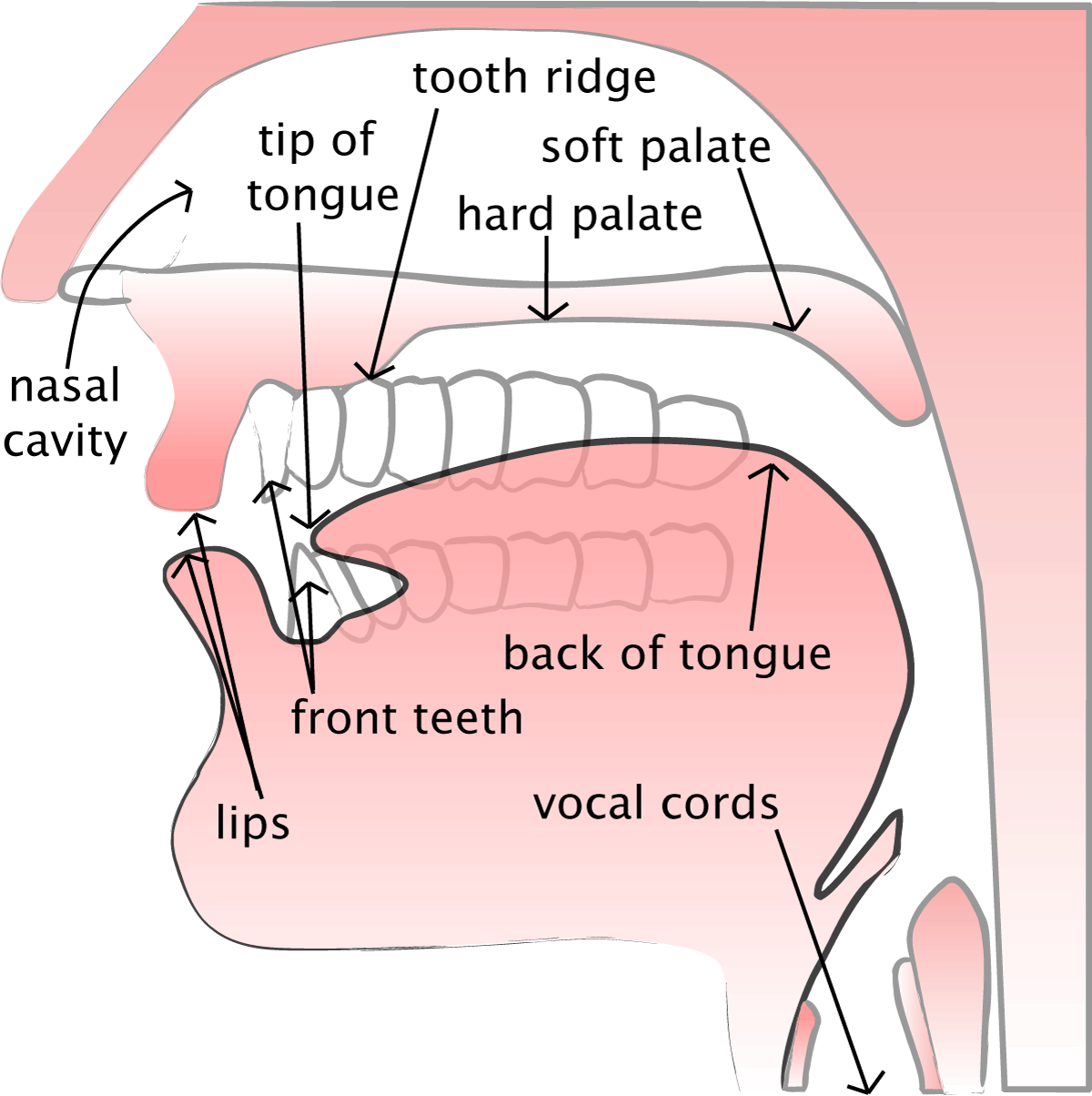When air is pushed up from the lungs, the movements within the vocal tract create each unique sound. The vocal tract is the area from the nose and the nasal cavity down to the vocal cords deep in the throat. Understanding the vocal tract is an important aspect of learning to accurately produce sounds. The lips, tongue, and jaw are the parts of the vocal tract that are initially the easiest to control voluntarily.
The vocal tract: front to back
Consonant sounds are generally easier sounds to "feel" than vowel sounds because they are created with a more constricted vocal tract.
The lips: The p sound, b sound, and m sound are created by pressing the lips together, while forming the f sound and v sound requires interaction between the bottom lip and the top teeth.
The tip of the tongue and the front teeth: The unvoiced th and voiced th sounds are created by controlling how the close the tip of the tongue is to the front teeth.
The front of the tongue (including the tip) and the tooth ridge: The tooth ridge is the bony bump directly behind the top front teeth (behind the tooth ridge is the hard palate). Accuracy of tongue position in relation to the tooth ridge is necessary for production of the t sound, d sound, ch sound, j sound, s sound, z sound, sh sound, zh sound, l sound, and n sound.
The back of the tongue and the soft palate: The soft palate is the fleshy area at the top, back of the mouth. The back of the tongue interacts with the soft palate to create the k sound, g sound, and ng sound.
The deep back of the tongue and the throat: The h sound is created by constricting the area at the very back of the mouth.
The nasal cavity
The nasal cavity is the uppermost section of the vocal tract. The m sound, n sound, and ng sound are nasal sounds that are created when air is released through the nasal cavity. As an experiment, create an m sound (the lips should be completely closed) and hold your nose shut with your fingers. When air cannot pass out our nose, we cannot create these sounds!
The vocal cords
The vocal cords are deep in the throat, and their vibration allows sound to be said more loudly or more quietly. While all vowel sounds are voiced, meaning the vocal cords vibrate during their production, many consonant sounds are unvoiced, meaning that the vocal cords do not vibrate during their production. The vibration of the vocal cords can be felt by placing two fingers at the front of the throat and creating a b sound. Then, in contrast, create a p sound and notice that there is no vibration.




